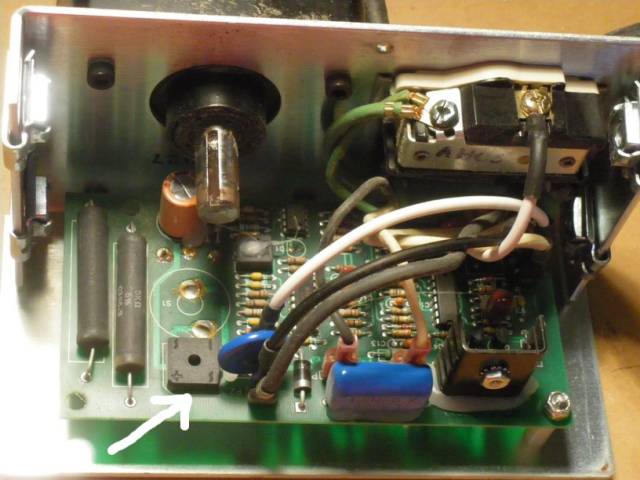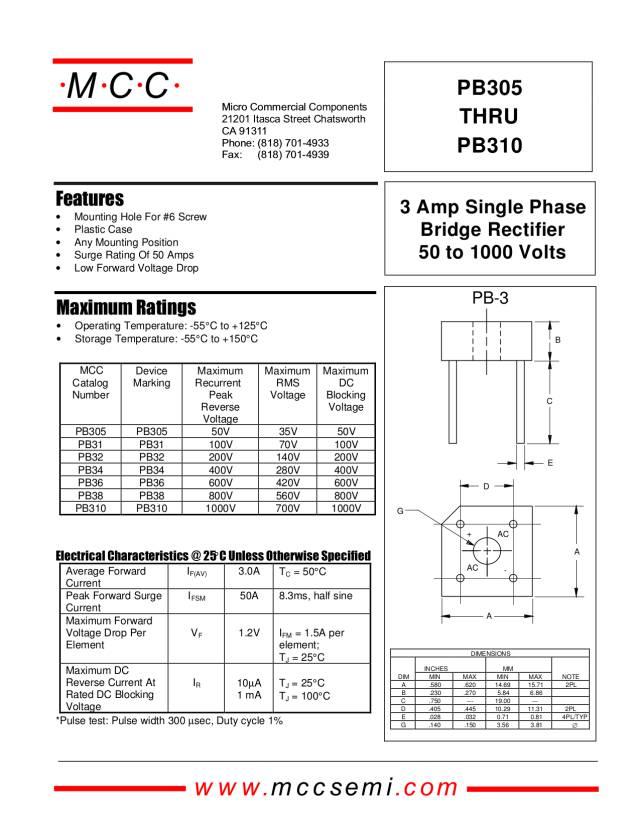
Lightweightladylefty
in over 11 years
More from Lightweightladylefty
Drum Sander speed control repair #1: I need help to identify a component on speed control circuit board
This is
part 1
in a
2 part
series:
Drum Sander speed control repair
-
I need help to identify a component on speed control circuit board
-
PTL! It works!
- I need help to identify a component on speed control circuit board
- PTL! It works!
My drum sander’s conveyor recently quit. We were able (with help) to narrow down the problem to a component on the speed control. My husband said he is willing to attempt to solder on a new component (a new circuit board is over $240) but after considerable web searching, I have been unable to find one. It might help if I knew what it was called so I could more easily narrow the search.
Here’s a photo. Can anyone tell me what the square, gray component on the lower left of the circuit board (indicated with an arrow) is called?

Thanks for any help you can render.
L/W
“Those who would give up essential Liberty, to purchase a little temporary Safety, deserve neither Liberty nor Safety.” Benjamin Franklin
8 Comments
Looks like a bridge rectifier check with a shop that sells electronic parts
probably $10.00 or there about.
I had one like that go on a pottery wheel looks just like it .
Klaus
Klaus is 100 % correct.
Now have you isolated the fault to this component?
If not very carefully remove the board and turn it on there should be mains voltage diagonally across the bridge with the tilda marks (AC symbol) ~ then DC mains on the other two diagonal pins ( + and – )
Bridge rectifiers usually show some sign of fusing when failing, so there may be a small crack in the case or epoxy somewhere.
There should also be a part number on it somewhere (or possibly a coded number) as well but from the looks of it its a possibly a 5A rating or thereabouts.
What are the details of the Drum Sander please?
Regards Rob
Found it …..My drum sander’s conveyor recently quit.
Regards Rob
Robert and Klaus, thanks for naming the part.
Robert, tomorrow my husband is going to talk to the motor shop that tested it to be certain that is the part requiring replacement. (They don’t actually work on little motors.) He didn’t charge for testing it, so we didn’t want to take up his time. The only marking on the part is MS14 PB 36. I can’t find any part listed exactly that way. The DC motor is 180 volts, 36 amps, 1/17 HP. I’m still not certain of exactly which rectifier is the correct one.
L/W
“Those who would give up essential Liberty, to purchase a little temporary Safety, deserve neither Liberty nor Safety.” Benjamin Franklin
The PB3 identifies it as the PB3xx suite of bridge rectifiers fron MCC
The PB36 Identifies it as a 3A single phase bridge rectifier

Regards Rob
Robert,
Thank you for that chart. If I understand correctly, my rectifier is 3 amp; 600 volts. In my searches, I came across a rectifier that says: "This part is the equivalent replacement for . . . PB36 . . . ", but what confuses me is that it is an 8 amp; 600 volt rectifier.
Can a different size be used without causing problems? For example, could I use a 6 amp 600 volt or a 6 amp 800 volt? (I can find single/small quantity of those sizes for a reasonable price, but I’m only finding large quantities of 3 amp 600 volt.)
Thanks again for your help.
L/W
“Those who would give up essential Liberty, to purchase a little temporary Safety, deserve neither Liberty nor Safety.” Benjamin Franklin
Yes and yes you are reading it correctly, and an equivalent would be OK.
A higher rating would improve reliability as long as it fits the component location on the PCB.
I am a little surprised its only rated at 3 Amps I would have considered 5 Amp or upward suitable.
That is one impressive sander so lets hope you get it purring again. I would be at a lost without mine, considering the amount of time is saves and the finish it produces, my dust collector hates it though as it blocks the cloth filters fairly quickly, regardless of the deputy.
Regards Rob
Robert, many thanks for getting back to me so quickly. I found a 6 amp 600 volt rectifier that is sized right (physically).
And, yes, I’m having a hard time getting along without it. It was my stupidity that caused it to fail. I hadn’t noticed that the fence had moved on some wood I was resawing on the band saw. I took it over to the sander and began sanding. The first couple of pieces were okay and then suddenly it was under load so I quickly dropped the bed but not enough. The cut was almost 1/4" off. It was still running when I shut it down but would not restart. The following day it started and I ran it for just a few seconds and turned it off. It would never restart after that. I’m pretty angry with myself for not noticing the error, (but I’ll get over it once my dear husband fixes my mess).
L/W
“Those who would give up essential Liberty, to purchase a little temporary Safety, deserve neither Liberty nor Safety.” Benjamin Franklin









